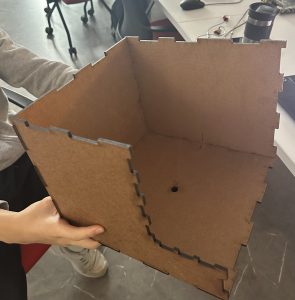For the last couple of weeks, I have focused on getting new prototypes for the dispenser and getting the whole subsystem satisfactory. I did a lot of testing on different prototypes, and we settled on one that worked decently within our requirements. With the software infrastructure already set up, I was able to test out the rotation of the chassis too. By not releasing the stepper motor in between motions, it generates quite a bit of heat but gains significant accuracy. While it was working fine, after going to a lot of rotations back and forth throughout the last couple of weeks, I have noticed that the stepper motors are giving out gradually as it has been losing steps in the reverse directions. We might have to purchase another one that we might use mostly for demo day. The same goes for the batteries. With the software portion mostly finished in terms of the website, we played a full game of 4 – people uno yesterday, without an error.
I am on schedule, and next week after the presentation will be dedicated to finalizing the hardware, further testing with the software, and overall getting ready for the demo. Also, I do need to add an LED that lights up when an illegal move is played.
Additional Prompt:
Everything I have done for this project is something I have never done before. I had to learn how to use CAD software for modeling, the laser cutter in Techspark, and 3d printing gears. I watched a lot of videos on YouTube to learn Onshape, which is the CAD software I have decided to use. My friend also initially taught me some tricks to make work easier. In terms of the laser cutter, Professor Nace and the staff at TechSpark were kind enough to walk through all the steps. For gears, I tried to make the dimensions of the machinery easy to create and replicate similar gears which also learned how to make on Youtube.
When I was learning all the new things on YouTube, I tried only learn couple of things that were directly related to my project, and I spent most of my time just trying them out. I printed a lot of boxes in Techspark using scrap, and I was able to get used to it pretty quickly. The same goes with the CAD where I tried to make many different iterations of the chassis before finalizing it. I believe trying these things out myself instead of watching more videos saved me time or tutorials since I got better at them a lot quicker.




